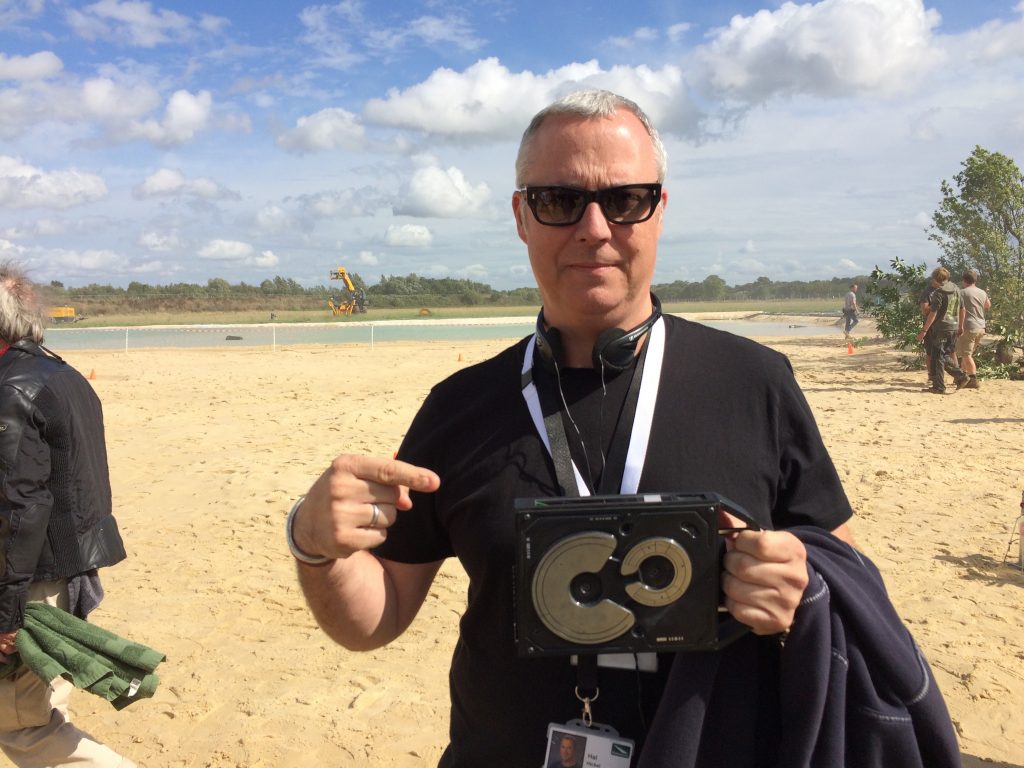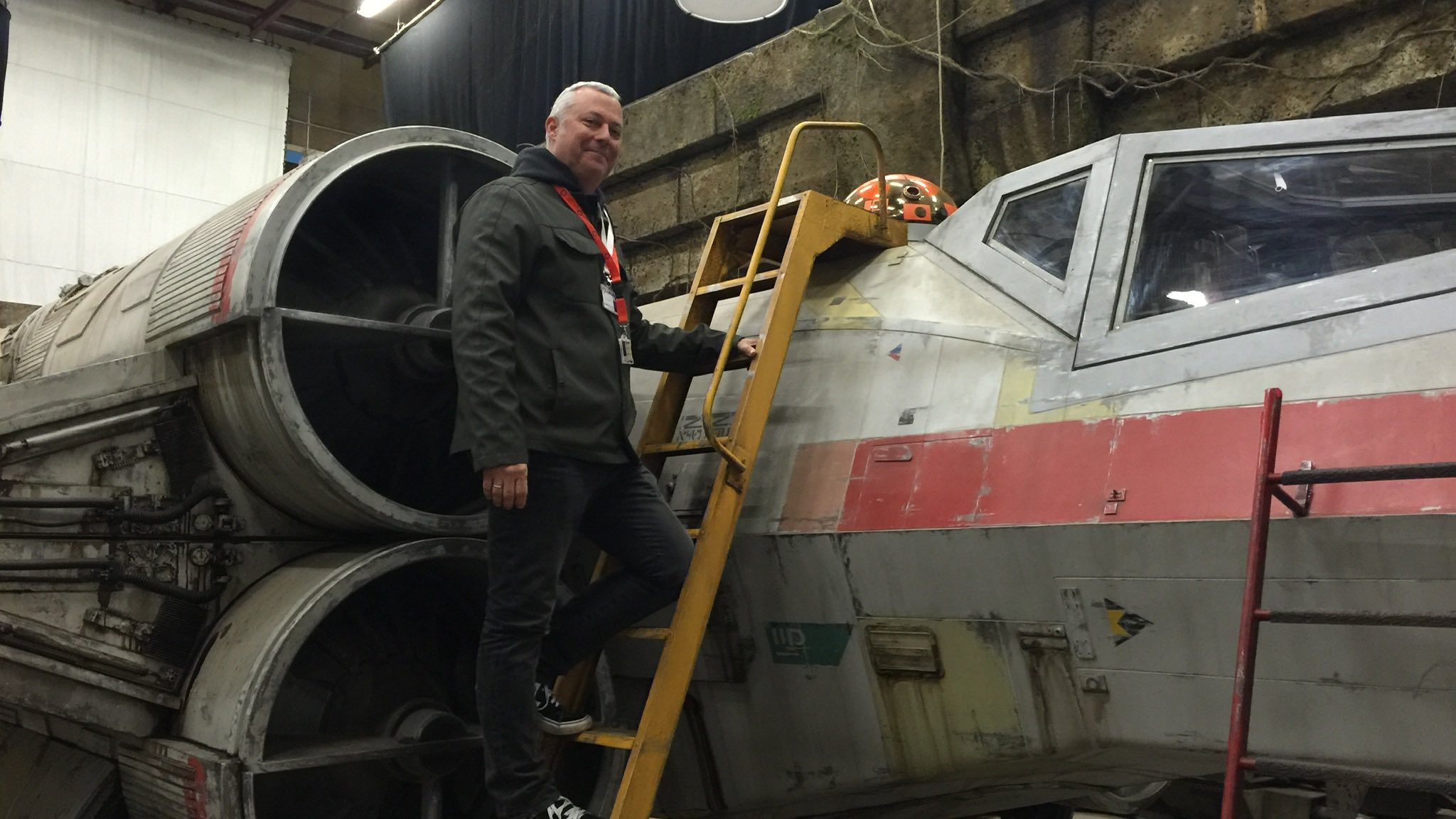
Hal Hickel speaks with ILM.com to discuss the process of bringing to life a reprogrammed KX-series security droid, along with his work on the pivotal space battle featured in Rogue One: A Star Wars Story.
Tell me how K-2SO came to be?
It was a whole journey. When we started the project, even before Alan Tudyk was cast, Gareth was very keen to explore the idea of a droid with an expressive face. Strictly speaking, that would generally be outside of the style book of Star Wars. Droids in Star Wars typically are industrial, with very simplistic designs. Even ones that are anthropomorphic, like Threepio, don’t have moving face-parts. Even their eyes don’t move. That’s just Star Wars. But we thought, “hey, this is interesting. Let’s look into this.” We did some tests and things. Part of the problem though is that if you’re going to go down the road of an expressive metal droid face, you’re dealing with hard-surface pieces, not rubber skin. You really have to get quite detailed before you can get into something that can express emotion. You have to have, at minimum, eyebrows that can make expressions. A mouth that can do the same. There’s more than that, but those are the basic things. You also can’t just go in a little bit, you have to go quite a ways down the road. With that said, some of those movements can start to feel overly complex, and not very Star Wars.
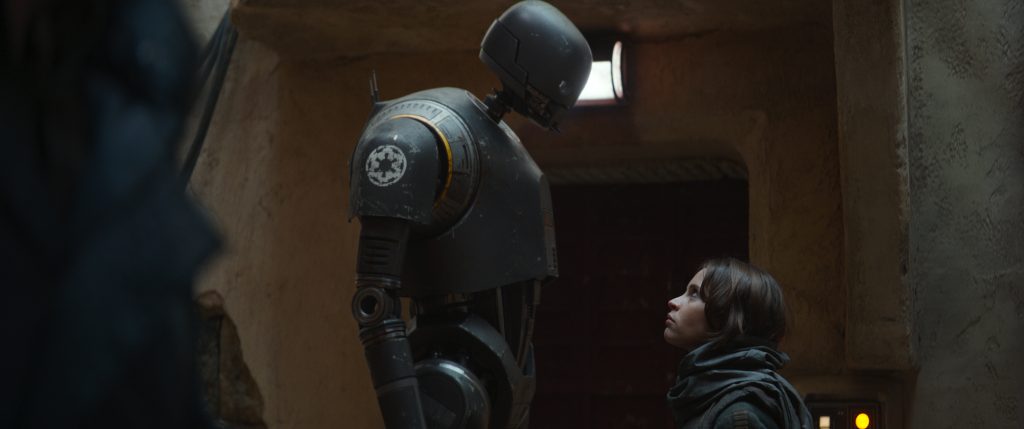
When was Alan Tudyk brought in?
He came on during that time period when we were figuring out K-2’s facial movements. I took an audio clip of Alan from his web series, Con Man, and did a quick animation with just the minimum of some eye blinks and eye rotations. It looked good, and it became a talking point, so I traveled out to the UK where shooting was being prepped. Alan was there, and he was getting fitted with the K-2SO stilts by the Creature Shop. We had a production discussion about the animation, and we felt that the blinks pushed it a little too far into “cartoon animation” territory, where you had expressive elements that don’t have an otherwise mechanically practical reason for being there. You could argue that there would be little shudders to protect the eyes from dust, but the idea of them blinking from an expressive standpoint pushed it into a different realm. What we did love though was that the eyes could rotate. While it didn’t communicate emotion, it did communicate a cognitive function. The character is thinking and their eyes are kind of darting around in a quiet moment, and you can see their wheels turning. So we kept that. Again, it went from, “let’s make him really expressive”, and then sort of going the other way with it and saying, “well, let’s move him back towards a Star Wars aesthetic.” We did really want to have a face part though that the protocol droids didn’t have. There was a droid, EV-9D9, who was Jabba the Hutt’s chief of cyborg operations at his palace. She also had an appearance in The Mandalorian Season One and Season Two as a bartender at Chalmun’s Spaceport Cantina in Mos Eisley on Tatooine. She had a little flap for a lower jaw that would move up and down. We tried that on K-2. He had a little block that was part of his design, and we tried animating that. It would basically click open when he was talking, and then click closed again when he was done. But again, it didn’t make him expressive, and it didn’t add anything to the performance. We knew it was K-2 speaking, we’d recognize his voice, so we did away with that.
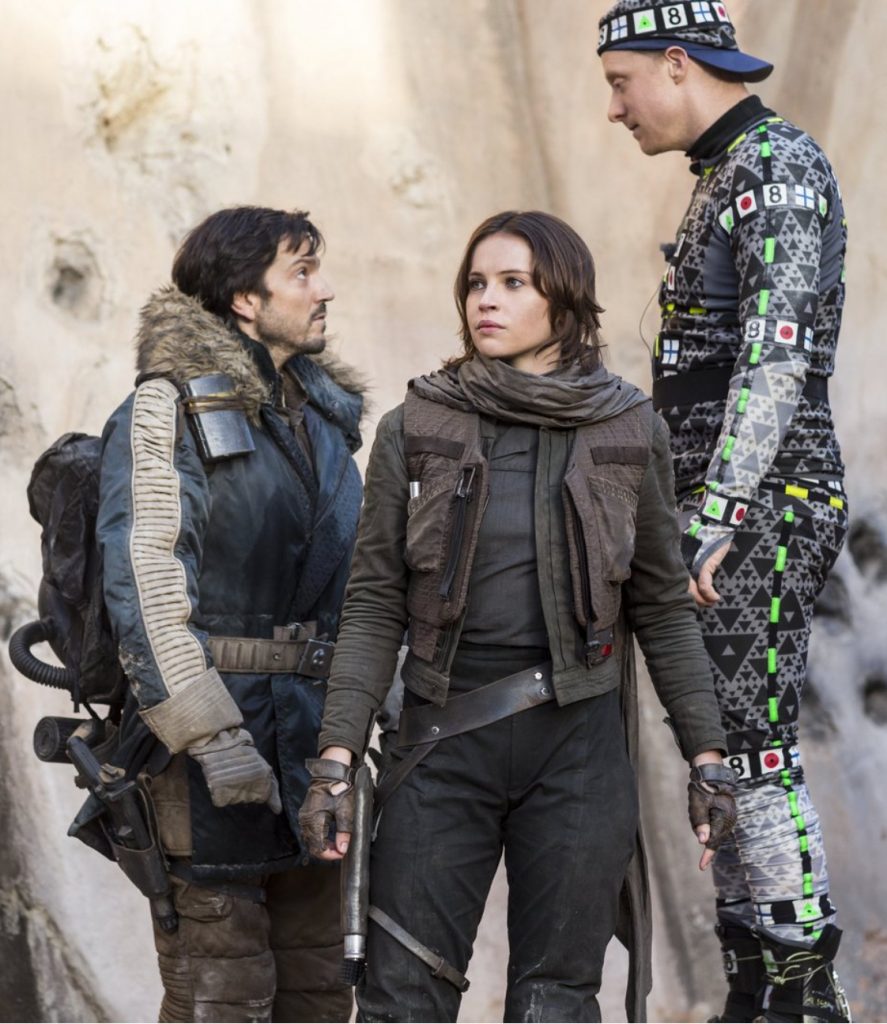
We ended up bringing Alan to Industrial Light & Magic, and we spent several hours with him on our motion capture stage. It was the first time he got to wear and walk around in the stilts. It was also where we did a real-time retarget to a simplified version of the asset. Alan could see himself on the screens, and it was a bit like an actor trying on a costume, or looking at themselves in a mirror and figuring out how to carry themselves. He was able to spend a lot of time figuring out how robotic to act versus how natural. It was super useful because he could stow that experience away. He wouldn’t be able to see that on set, or on location, but what he could do is build that exercise into the performance; what the character is for him, just by doing it for a few hours on our mocap stage. Two weeks later we were shooting in Jordan for his first scene, and he was able to tap directly into that.
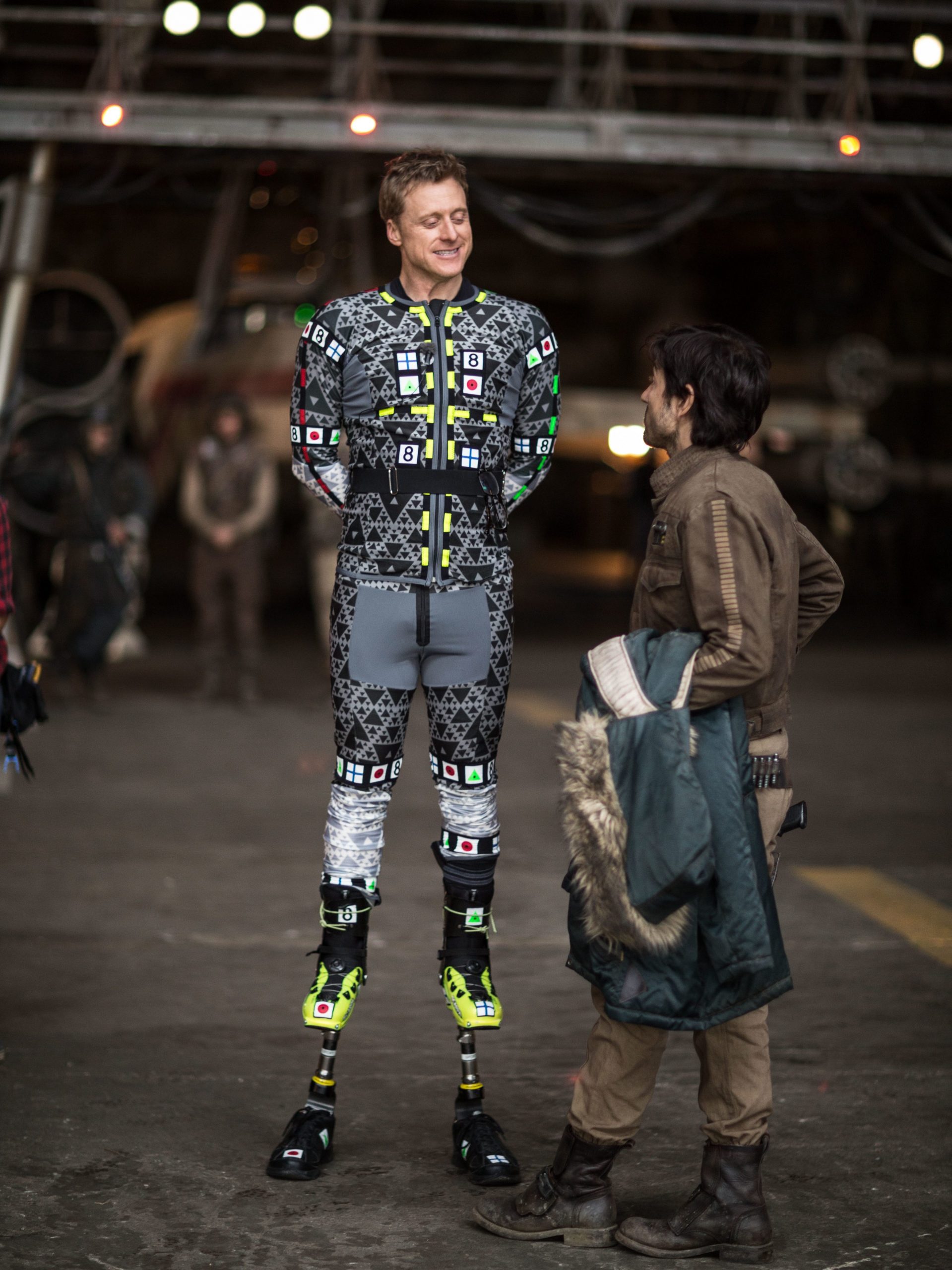
I also understand that you had two shots of K-2SO in the film that were rendered in real-time, is that correct?
That’s correct, we did. We shot two scenes of K-2 from behind, because at the time, we had yet to find a solution for his luminous eyes, and the refractions, and those sorts of things, but with a little more time we could have sorted that out. Those two shots though were rendered in real-time. There was no demand from the film that we do that, but instead we did it because it was technology that we really wanted to push forward. With the convergence of games and offline traditional visual effects, we knew we wanted to keep pushing into that space, so we worked really hard to do that in a few shots.
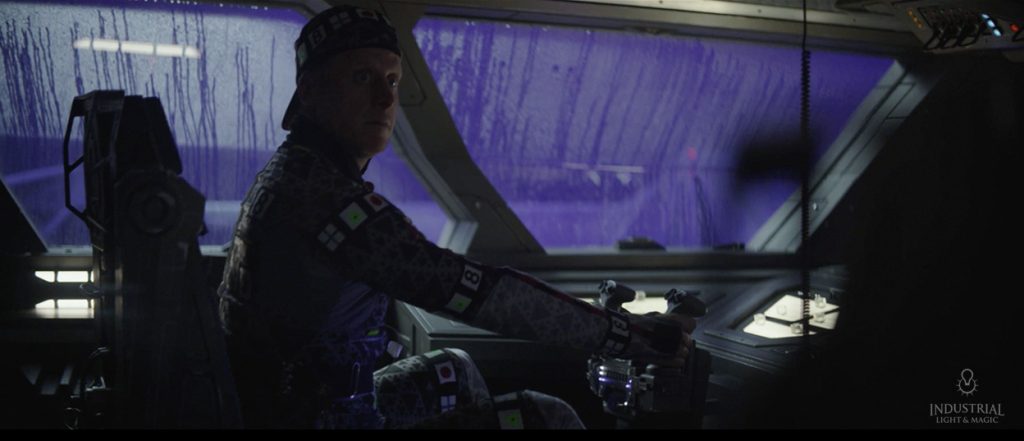
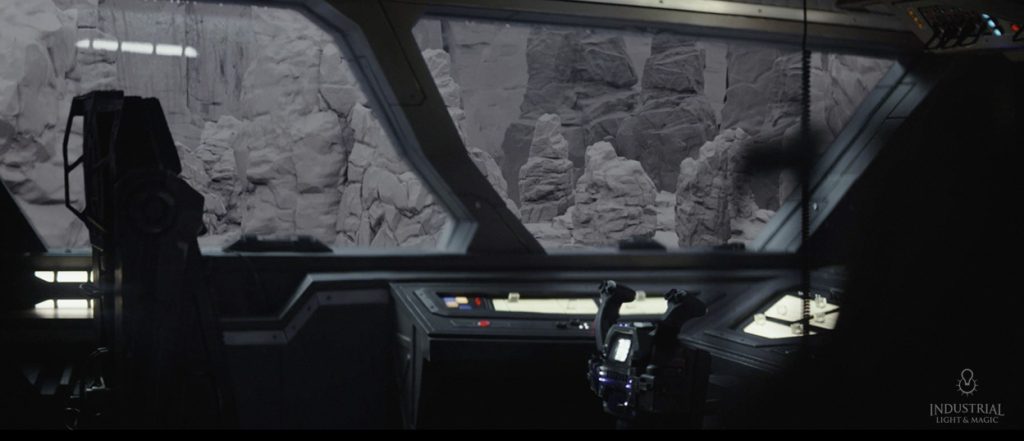
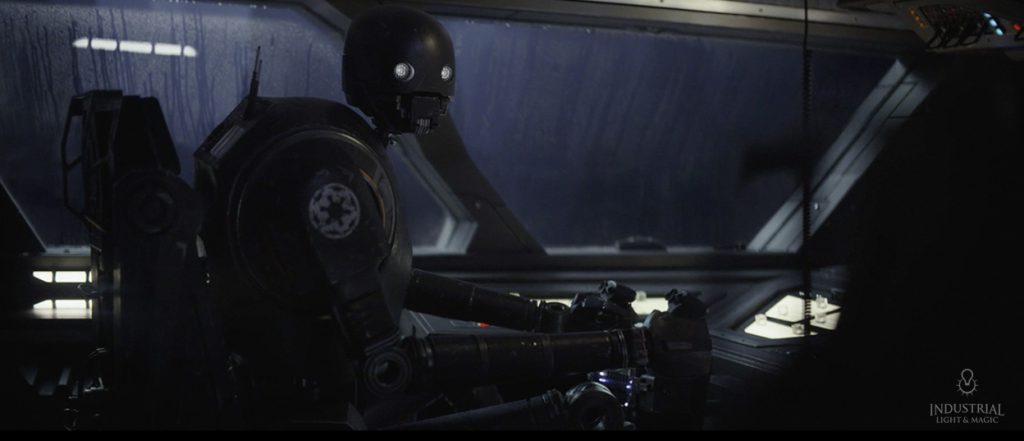
Tell me more about your work on the Battle of Scarif?
That was a great experience because I got a rare opportunity to contribute to the story. Working in visual effects, we are involved in projects from beginning to end, but we are mostly thought of from a post-production standpoint. John Knoll is an outlier on Rogue One because he conceived the story, but generally, we aren’t involved in the story aspect. Some yes, (it depends on the project), but quite often, no. What happened though is that John and I started to have these story meetings with Kiri Hart, Pablo Hidalgo, and Dave Filoni, to figure out what would be happening in this battle. “What are the stakes? Who’s doing what? What is Admiral Raddus up to? How is he communicating with the Rebels planet-side?” That was super fun for me, because as I said, not every project affords me with the ability to contribute at the story-level. Out of that, John had a concern about the specifics of the battle that were outlined in the opening crawl of Star Wars: Episode IV – A New Hope. It says “Rebel spaceships, striking from a hidden base, have won their first victory against the evil Galactic Empire.” We started to ask, “What was that victory? Is it just getting the plans, or was it a large-scale military victory as well?” We felt that we needed to make good by that line.
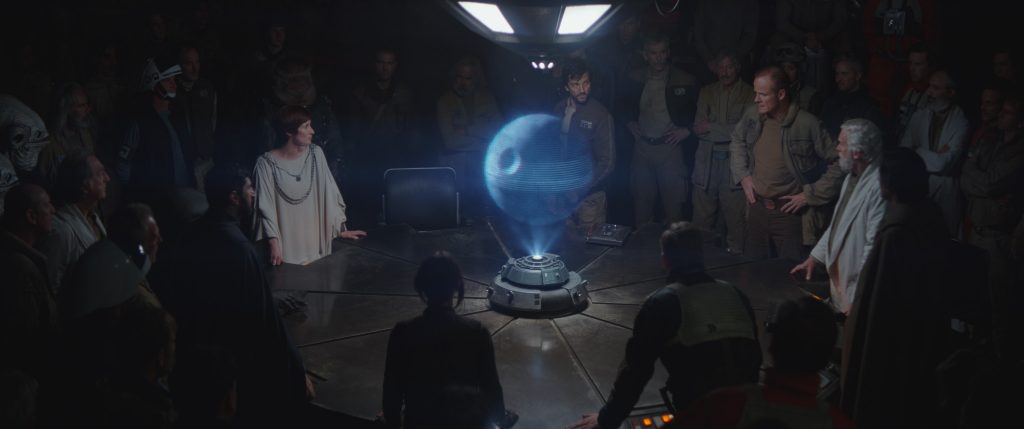
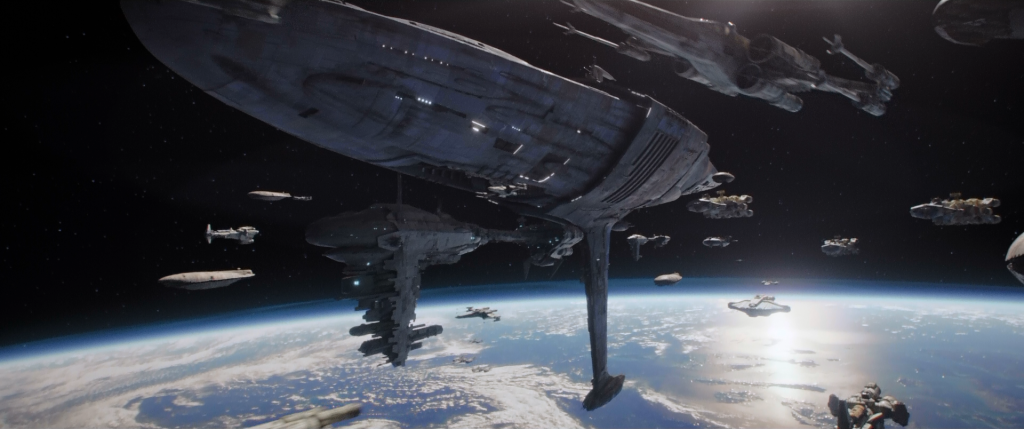
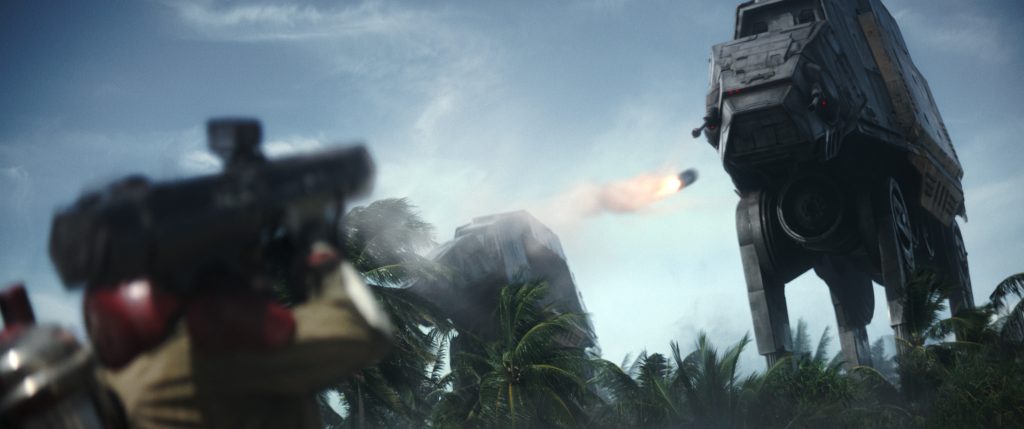
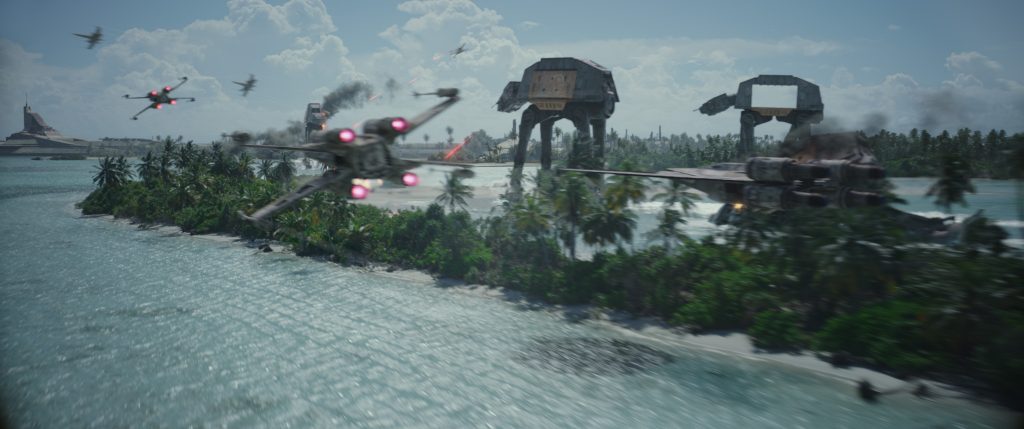
So how did you do it?
Well, we felt there needed to be a moment in that battle where the Rebel Alliance lands a significant blow against Commander Cassio Tagge’s starfleet. There’s that great moment from the Death Star conference room scene in A New Hope, where Admiral Motti reminds Tagge that the Alliance is “Dangerous to your starfleet, Commander. Not to this battle station.” We wanted to honor that too. John came up with this great idea of colliding a pair of Star Destroyers into the Shield Gate and knocking the planetary defense shield out. So if you think about it, the Rebels took down two of the fleet’s prized Star Destroyers, destroyed their shield generator and space station, forced Tarkin to obliterate his own security complex on Scarif, and they also managed to steal “Stardust”, the technician readouts to the Death Star. We felt that that was a satisfying victory for the Alliance.
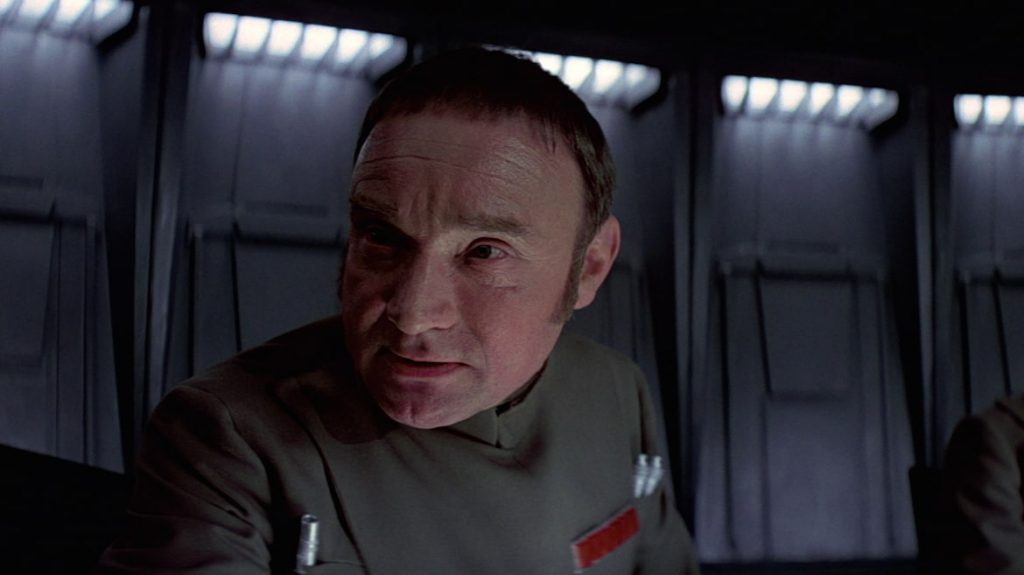
How did you realize the sequence of the Star Destroyers, ‘Persecutor’ and ‘Intimidator’, colliding?
I handed that off to a great Animator by the name of Euising Lee. He’s a terrific artist, and he’s especially gifted in his ability to realize spaceship action, and also camera work. He was able to take the idea and just run with it. He made a mini feature out of it; just a huge meal of all these shots. We showed it to Gareth, and kind of boiled it down into the shots that we wanted and made a shorter version of it. But he really took John’s idea and pushed it forward visually into a really terrific series of shots. That was a really fun process. The whole space battle was tough, because, as John previously mentioned, there were a lot of moving parts. “When are we with the action on Scarif? When are we with Raddus? When are we with the fleet in battle?” It was tough because you can’t kick out little iterations of shots. It’s laborious to reanimate an entire chunk of space battle to see how it plays. So we tried to repurpose old pre-vis that sort of fit the bill, and then we’d quickly do temporary versions of shots to fill holes and give editorial something to plug in to figure out when we were going to be and where, and more importantly, what the goals were. The whole thing with Admiral Raddus waiting for the transmission from the squad on Scarif seems obvious, but there were versions of the space battle that didn’t play out like that, where instead he was directing the fleet and just trying not to get blown up. A lot of this gelled out of story meetings, and the work that Gareth Edwards was doing, and Tony Gilroy too. The battle took awhile to come together, but the center piece – the great moment where it all goes silent when the ships are falling, and they puncture the Shield Gate. It turned out perfectly.
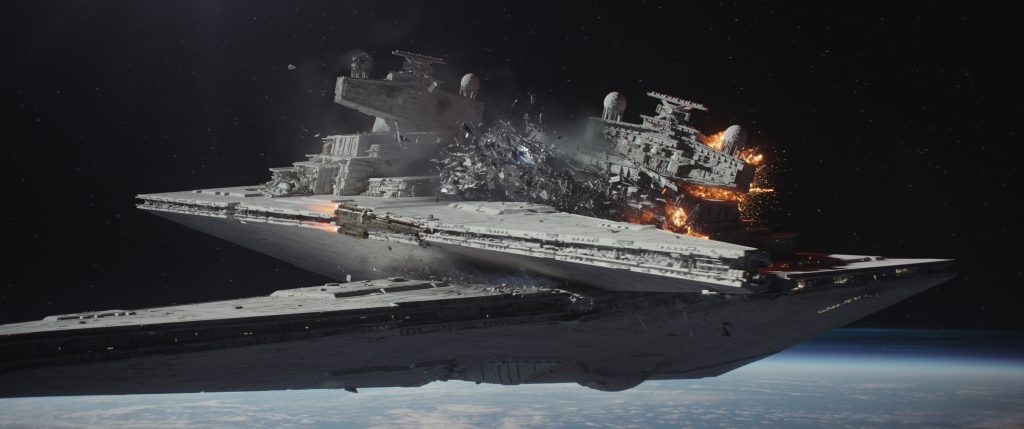
How did it feel to finally see that sequence?
The thing is, when working, sometimes late in post we might get to hear music that’s being developed, but more often than not we just hear the scratch sound design, and we don’t hear the music until it’s in cinemas. Let me tell you, sitting in the theater at the premier, and that moment in the scene when it goes quiet, and Michael Giacchino’s score swells, and the Star Destroyers are plunging down into the Shield Gate, I just thought, “my god! What a moment.”
